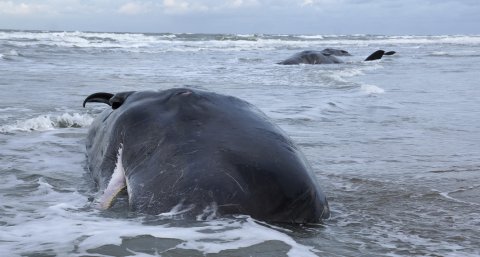Why do whales and dolphins become stranded?
Does human activity play a role?
Porpoises and other cetaceans can become stranded due to disease or weakness but human activities can also play a role. Examples of human activity-related issues include disturbance such as underwater sounds, pollution (plastics), toxins (PCBs, POPs and heavy metals), by-catch (during commercial fishing operations porpoises and other non-target species can become caught in nets and suffocate), damage to hearing (caused by underwater construction projects such as windmill parks and seismic research) or collisions with ships. It is often the case that there are many contributory factors and sometimes the precise cause of the stranding is not determined.
Individual or mass strandings
Porpoise strandings usually involve individual animals reflecting their predominantly solitary existence. In contrast, species such as the long-finned pilot whale and sperm whales live in family groups or pods and strandings typically involve multiple animals. When two or more animals strand in the same location it is referred to as a mass stranding – with the exception of mother-calf pairs.


